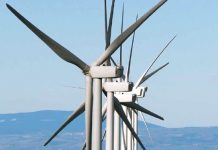The wind industry has been gushing since the American Wind
Energy Association released its “Fourth Quarter 2016 U.S. Wind Industry Report” in February. That’s because that report showed American wind power had its second strongest quarter ever for newly installed energy-generating capacity.
It proves that wind power is no longer Republican red or Democratic blue, but money green. And states such as Texas and Iowa are leading the way. Wind power is moving through Texas into the Plains states and all across the Midwest creating 89 percent of newly completed capacity in 2016. That’s good news for the industry, and it’s good news for the myriad of companies responsible for the systems, components, and parts that make up a wind turbine.
In this month’s Wind Systems, experts in their fields are sharing their insights into making sure turbines stay spinning through their lifetimes.
AeroTorque offers up its expertise on the components that make up a turbine and when is the best time to upgrade them.
Premature gearbox failure can be a major issue, and Spectro Scientific takes a look at some industry technology that can diagnose wear faults in machine applications.
Shockwatch examines vibrations and how to monitor them from the time parts ship to the time a turbine makes its last spin in order to prevent costly downtime.
And in our Conversation, SparkCognition’s Stuart Gellen discusses how his company is developing proprietary software that monitors systems and alerts asset owners of problems and the best time to tackle them before they become expensive liabilities.
In our company profile, we spotlight NTC Wind Energy. This family-owned Texas company has been supplying components — including its revolutionary bolt cap — for more than two decades to help keep turbines standing tall.
In this month’s Crosswinds, I talked with the CEO of Accio Energy. If you’re a Harry Potter fan, that company name is not a coincidence. It is the same summoning spell used by the students of Hogwarts.
Accio’s new technology will create electricity from wind without the use of conventional turbines. It mimics how thunderstorms create lightning, a process that seems almost like — you guessed it — magic. It’s a fascinating development, and one that I wish every success. The more players out there can only mean continued good things for renewable energy and the environment.
That’s just a taste of the good news and good information you’ll find in this issue of Wind Systems. I hope you enjoy it.
And, as always, thanks for reading!


























